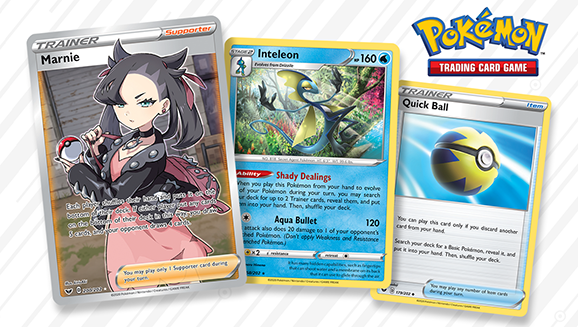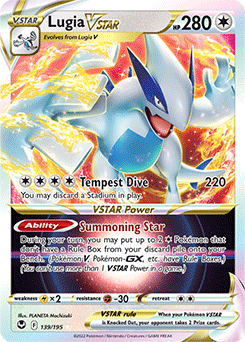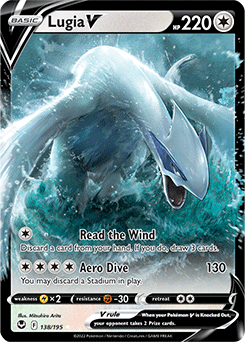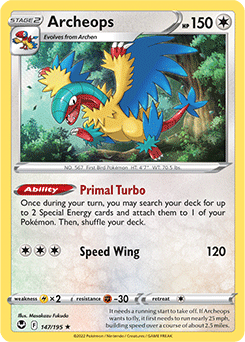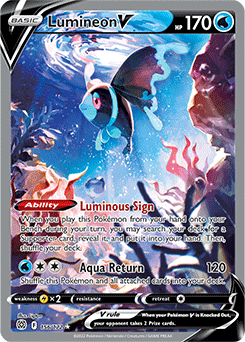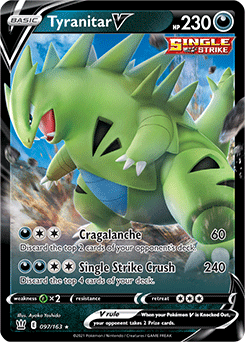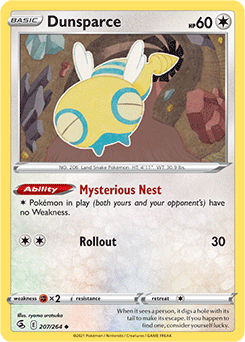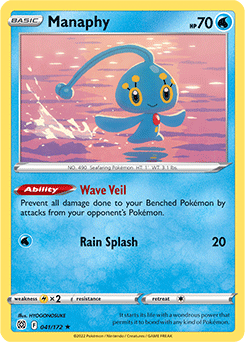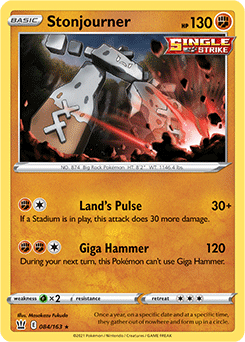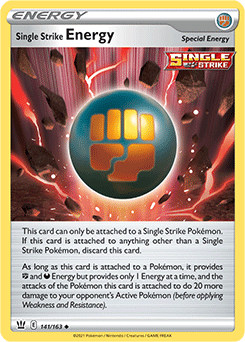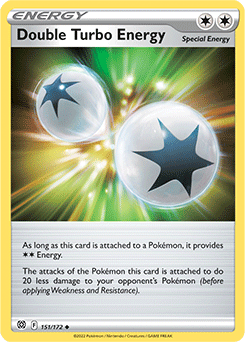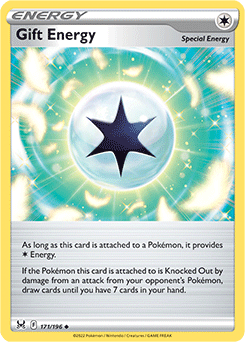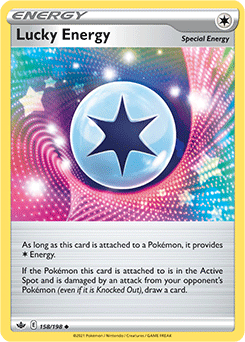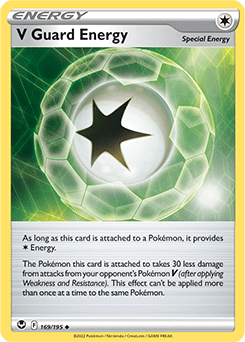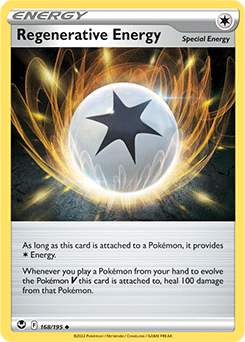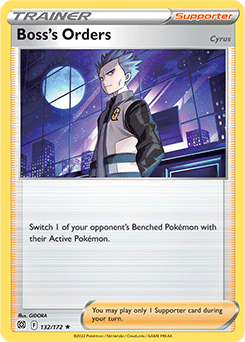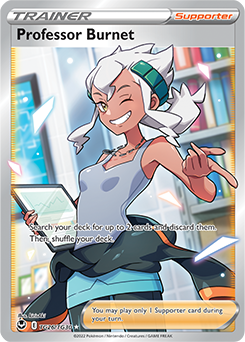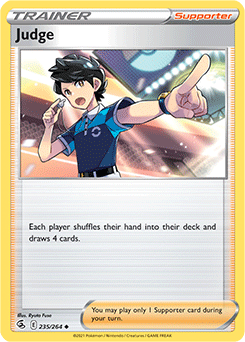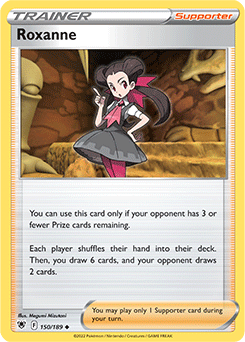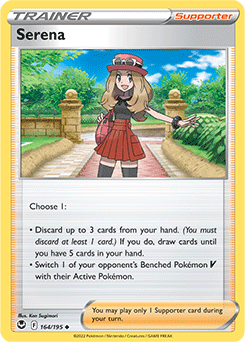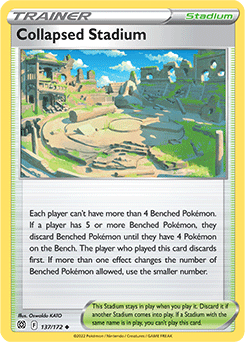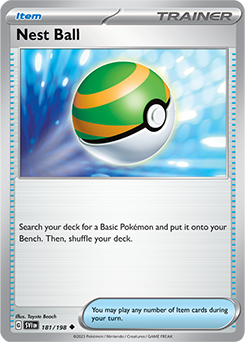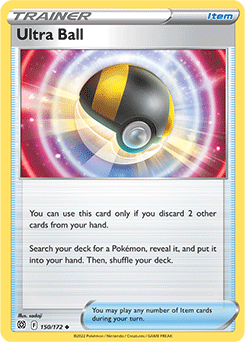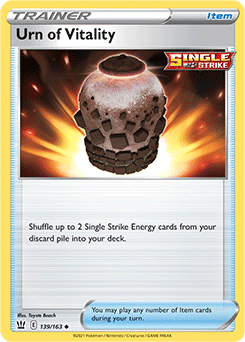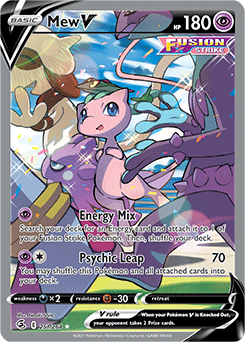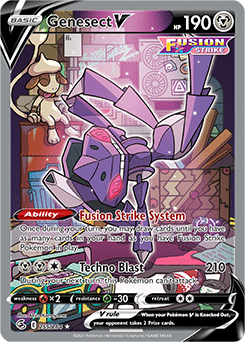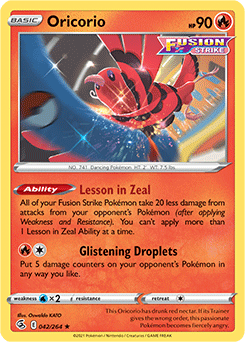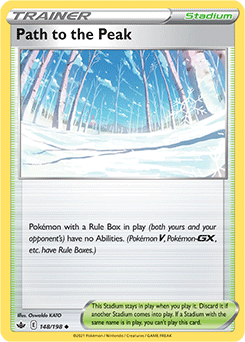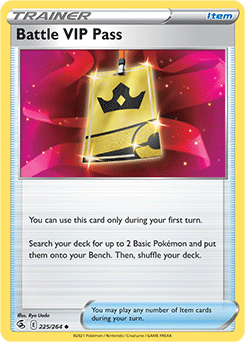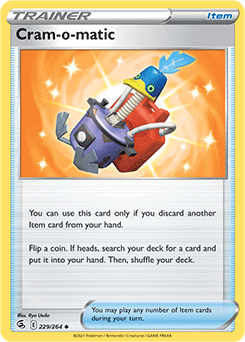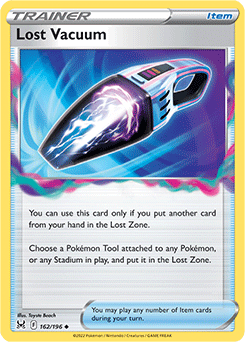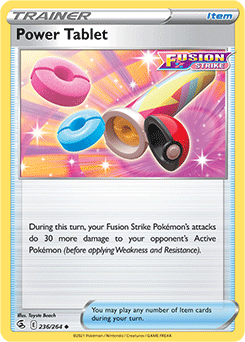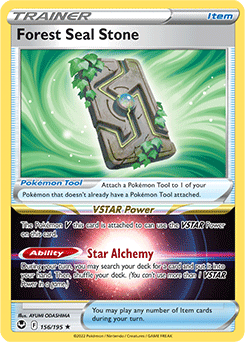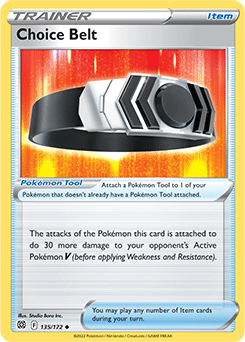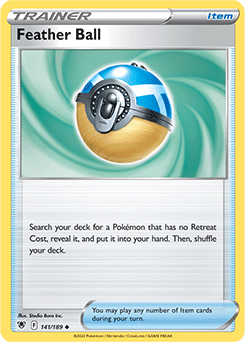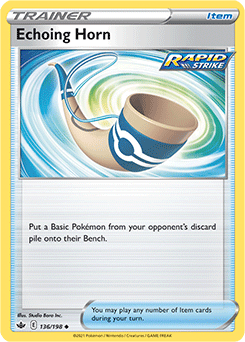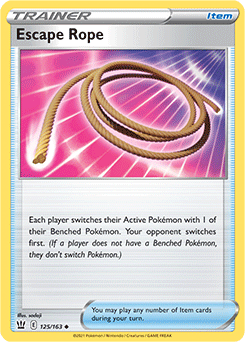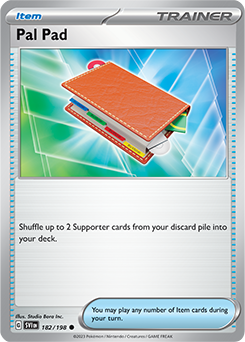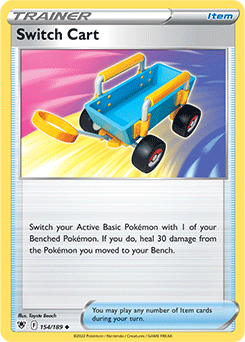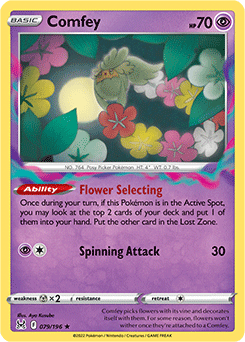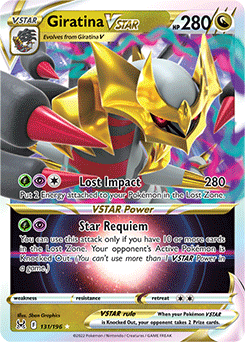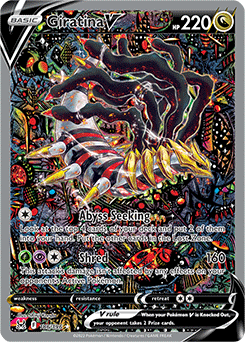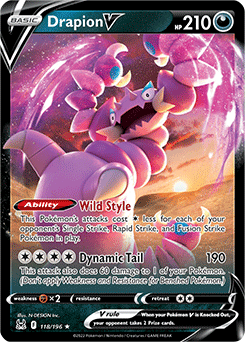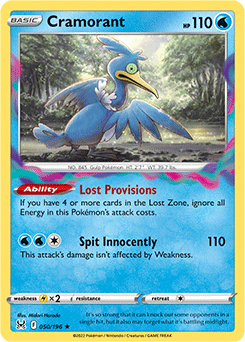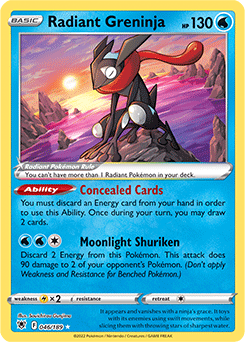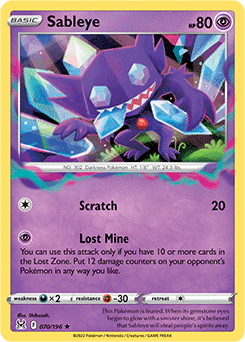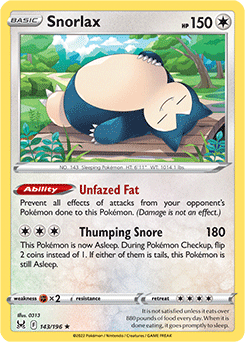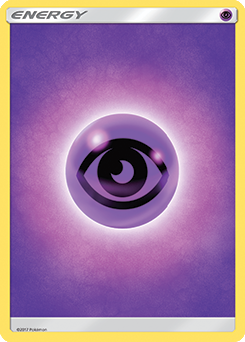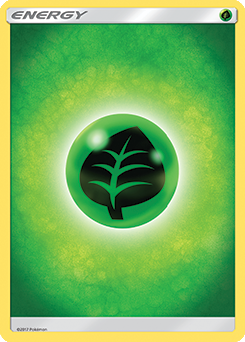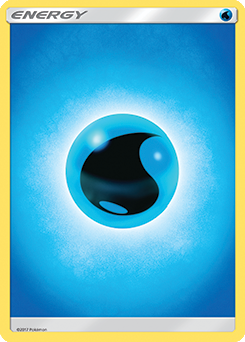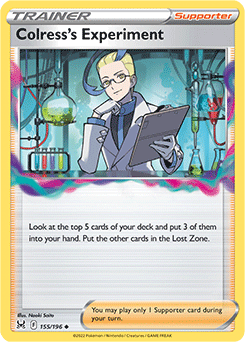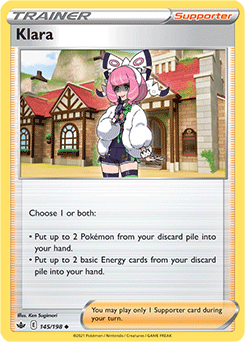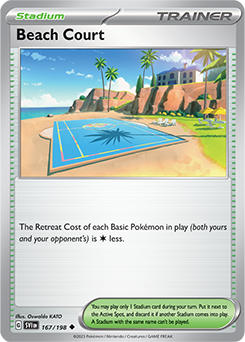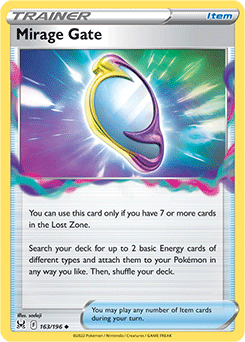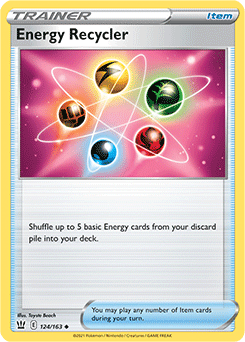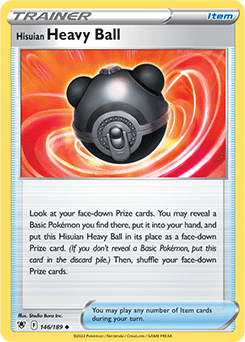By Robin Schulz, Contributing Writer
After a longer wait than usual, the Pokémon TCG rotation is finally here! It’s always an exciting time in the game as it brings a big shakeup to the top-performing cards and decks. This time, all the cards with the D regulation mark are leaving the Standard format, which is roughly equivalent to the first four Sword & Shield expansions.
In this article, we’ll go over the most important cards and decks we are losing, and then we’ll take a closer look at how some of the popular decks can be adjusted.
Important Outgoing Cards
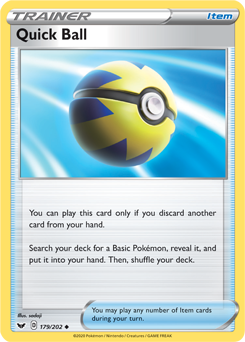
Trainer cards, the cards that form the backbone of many different decks, often make the largest impact when rotated out. This rotation is no different. Two of the most commonly played cards that are leaving the format are Quick Ball and Evolution Incense from the Sword & Shield expansion. They’ve been the easiest and most universal way of searching Pokémon from the deck ever since their release, and their loss will have a noticeable impact on how deck lists will look going forward. Nest Ball from the Scarlet & Violet expansion is a good replacement for Quick Ball, but Evolution Incense is currently lacking an adequate alternative. Ultra Ball, a great generic search card, is sticking around, but decks that focus on Evolution Pokémon will need to look for additional, more creative ways of finding them.
Since Nest Ball puts Basic Pokémon directly onto the Bench, Pokémon whose Abilities activate when played from the hand become weaker. This affects Lumineon V, a card that will also gain some importance now that Crobat V is leaving the format. Lumineon V is still a good card in decks that play a lot of Ultra Ball, but it probably won’t be seen any longer in decks that don’t like to discard a lot of cards, such as Lost Zone variants.
Another major card from the Sword & Shield expansion that we’ll have to say goodbye to is Marnie. Judge is a decent replacement, but the one-card difference in cards drawn makes it a much weaker draw Supporter. Marnie was often seen as a reliable consistency card that had the added benefit of shuffling away the opponent’s hand to the bottom of their deck, while Judge is first and foremost a disruption card. It will be played in almost every deck, often alongside Roxanne, but probably in lower counts than Marnie, meaning strategies that rely on building up their hand will become a bit stronger.
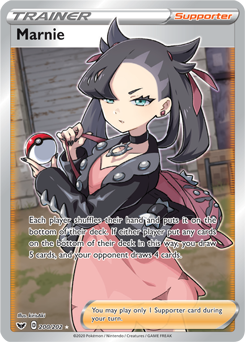
The next big hit to many decks is the loss of Scoop Up Net, a card that has been seen in almost every deck that’s focused on single-Prize Pokémon. There simply isn’t a direct replacement for the incredible flexibility that Scoop Up Net has provided. An Ability like the new Hawlucha’s Flying Entry becomes significantly worse than it would have been before, and decks will simply have to be built differently.
Another card that single-Prize decks will have to replace is Ordinary Rod. Luckily, Klara from the Sword & Shield—Chilling Reign expansion and Miriam from the Scarlet & Violet expansion are two rather easy picks for that. But because they are Supporter cards rather than Item cards, the dynamic of Pokémon recovery will be changed.
The last big change that needs to be mentioned is the available Special Energy cards. The whole set of type-specific Special Energy cards is leaving the format, alongside format-defining staples Capture Energy and Aurora Energy. This affects almost every deck, especially the former top deck Lugia VSTAR / Archeops. Some decks can replace these cards with more Basic Energy, but all in all, this is a change with big implications.
Important Outgoing Decks
Before taking a closer look at the decks that will survive the rotation, we should first bid farewell to those that we will not be seeing again.

One of the most important ones is Vikavolt V. It’s a deck that only saw occasional play for most of its time in the Standard format but picked up a lot of success towards the end of the Sword & Shield—Silver Tempest era. It was one of the best answers to the format’s top decks.
Another anti-meta deck that will not be available anymore is Eternatus VMAX with Galarian Weezing. Just like Vikavolt, it became popular with the introduction of the Sword & Shield—Silver Tempest expansion because of its solid matchups against Lugia VSTAR and Lost Zone variants. Players of those two decks will be happy to not have to worry as much about Ability and Item lock anymore.
A deck that is technically still available but likely no longer relevant is Regigigas. It will not have Aurora Energy to power up all the different Regis and will also be missing other key cards in Ordinary Rod and Scoop Up Net, so the deck will have to take a back seat for now. However, there’s always the possibility that future expansions could breathe new life into it, so we can’t completely count out Regigigas just yet.
Current Decks Needing Adjustment
Lugia VSTAR

Lugia VSTAR / Archeops was by far the most popular and successful deck before rotation. If you’re tired of playing against this deck, there’s good news: it will lose a lot of cards. That doesn’t mean the deck will disappear, but it will have to completely reinvent itself to stay competitive.
The first problem Lugia VSTAR / Archeops is facing is the loss of Evolution Incense and Quick Ball, both of which are vital to the strategy of getting two Archeops into the discard pile as soon as possible. Nest Ball and Capturing Aroma are fine replacements when it comes to setting up Lugia VSTAR, but they aren’t reliable enough for the Archeops part of the strategy. To solve this issue, we can add in Professor Burnet, which gives the deck an alternative path to achieving its goal. Combine that with adding two Lumineon V that can find this Supporter card when needed, and it will be significantly easier to consistently set up two Archeops on the second turn of the game.
The second (and even bigger) issue for Lugia VSTAR in the new format is the drastically reduced amount of available Special Energy cards. Powerful Colorless Energy made it possible for Lugia VSTAR to Knock Out other Pokémon VSTAR easily and enabled the use of Stoutland V to gain an advantage over Basic Pokémon-focused decks. Similarly, Aurora Energy gave it access to some of the most powerful attackers in the game, like Yveltal, Raikou, and Radiant Charizard. Having both options gone resets the deck’s power level completely.

There is, however, one remaining Pokémon that Archeops can power up for a big Knock Out: Tyranitar V. With two Single Strike Energy attached, its Single Strike Crush attack reaches the magic number of 280 damage, which gives the deck the offensive power it needs to survive. Tyranitar V isn’t as naturally efficient as the cards the deck had available previously, but it’s quite strong nonetheless. Conveniently, Tyranitar V has a type advantage over both Mew VMAX and Gardevoir ex, two meta-relevant Pokémon that would otherwise be difficult to deal with. Including this Single Strike package also gives us access to a decent single-Prize attacker in Stonjourner, who is particularly useful against Lightning-type Pokémon like the new Miraidon ex.
With Urn of Vitality to recover discarded Single Strike Energy, the deck can afford to play a slightly lower Energy count than before. As previously mentioned, the remaining Special Energy aren’t quite as impressive, but some of them have really cool bonus uses that will finally get a chance to shine, like how Regenerative Energy can heal away the damage done by a Cramorant in the Lost Zone matchup!
As much as the deck changes, some parts remain the same—the lineup of support Pokémon, for instance. Dunsparce loses a bit of value without Vikavolt V and Regieleki as common threats, but with Raikou V being a popular option in Lost Zone decks and the new Miraidon ex deck looking like a strong contender, it’s probably still worth playing. Similarly, Manaphy loses some of its applications, but with Radiant Greninja being as popular as ever, it still seems useful enough.
Mew VMAX
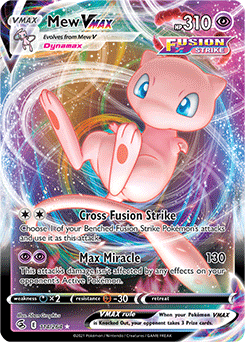
Mew VMAX has been one of the best decks for over a year at this point, and that will very likely continue to be the case in the upcoming format. Unlike Lugia VSTAR, Mew VMAX loses almost nothing. This doesn’t mean the deck won’t adapt at all—players might want to adjust some card choices depending on how the metagame around the deck changes—but its actual deck lists shouldn’t change much.
The one card that will be dearly missed by Mew VMAX players is Quick Ball. While it can be replaced in most decks with Nest Ball, that won’t work quite as well in this case. One of the main features of Quick Ball in Mew VMAX was the option of discarding unplayable cards, making Genesect’s Fusion Strike System more effective. However, Nest Ball can become one of those unplayable cards itself if it’s drawn when the Bench is already full, which makes it a risky inclusion. Feather Ball is an alternative that only searches for Mew VMAX, but has the advantage of never getting stuck in hand. Another nuisance for Mew VMAX is the change to Tool cards (they are now considered their own category), which makes Cram-o-matic a slightly weaker card.
Overall, the deck does take a hit to its consistency, but its strategy doesn’t change and is as strong as ever. The main question is still how to deal with Drapion V. I’d expect the disruption-focused variant that centers on Judge and Path to the Peak to stay the most popular, but Meloetta and Elesa’s Sparkle are also still good options.
Lost Zone

Just like Mew VMAX, Lost Zone decks lose little in the rotation, but they will still have to adapt. Without Scoop Up Net, they can’t reuse Comfey’s Flower Selecting Ability as effectively as before, so filling the Lost Zone will be slower. Deciding which Pokémon to put into play also becomes more difficult, but overall, the deck still works just fine. It even gains access to the new Beach Court Stadium card, which is the perfect replacement for Air Balloon.
Also, unlike in the previous two decks, the switch from Quick Ball to Nest Ball is an upgrade for Lost Zone decks, as they don’t like discarding cards from their hand. Losing out on Ordinary Rod is a bit annoying, but Klara in combination with Energy Recycler makes for a good replacement.
A variant of Lost Zone decks that could be making a comeback is Giratina VSTAR. Despite being one of the strongest decks in the Lost Origin format, it completely disappeared with Sword & Shield—Silver Tempest, mostly because it was unable to keep up with the Lugia VSTAR deck. Now that Lugia VSTAR has been significantly weakened, it might be time to take another look at Giratina VSTAR.
The main advantage Giratina VSTAR has over other Lost Zone decks is its wide matchup coverage. While the “Lost Zone Box” style builds oftentimes have to include tech cards to deal with specific other decks, Giratina VSTAR naturally has the answers to just about everything. This comes at the cost of being a bit weaker in the narrow metagame, but in an unexplored and open format like the one we are entering right now, it’s a very appealing trait to have.
It also helps that other decks lose two of the cards they used to counter to Giratina VSTAR: Big Parasol and Wash Water Energy. Those were able to block the Star Requiem attack, but now there’s nothing stopping Giratina VSTAR from taking 3-Prize Knock Outs on Pokémon VMAX.
Closing Thoughts
Lost Zone decks and Mew VMAX seem like great choices when looking for proven decks that are sure to transfer well into the new format. Lugia VSTAR’s future is a bit more uncertain, but it’s a good example of a deck that will likely stay relevant by undergoing a lot of changes—and it will only get stronger with future expansions as new Special Energy cards join the format!
However, those three decks aren’t the only ones that I expect will make up the top tables at the upcoming Europe International Championships. Gardevoir ex and Miraidon ex from Scarlet & Violet are incredible cards that will see a lot of play, and I’m sure players are also working on all kinds of other concepts.
Rotation is the perfect time to get creative with deck building, especially when paired with a new set release. I’m excited to see what everyone comes up with!

Robin Schulz is a contributing writer for Pokemon.com. He has been competing in Pokémon tournaments for 10 years and was the Pokémon TCG Masters Division World Champion in 2018. He spends a lot of time traveling and competing, and he rarely misses a big event. Aside from playing Pokémon, he attends university, where he is studying mathematics.
